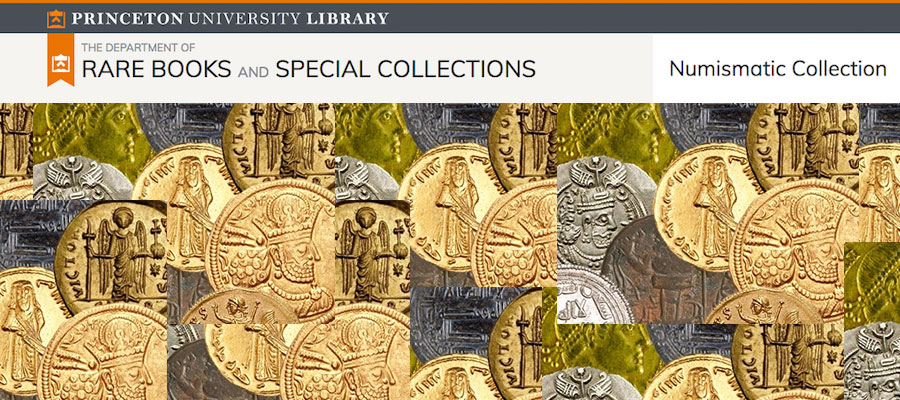The Princeton University Numismatic Collection is one of only a handful of academic coin collections in the United States. In addition to serving the needs of students, faculty and researchers in a number of departments, it is available to the general public through exhibitions, the online database, and by appointment with the curator.
The Numismatic Collection is strong in Byzantine coinage. The core collection contains over 700 coins in gold, silver, bronze. Some of these have been described, together with examples in the Princeton University Art Museum, in S. Curcic and A. St. Clair, eds., Byzantium at Princeton (Princeton, 1986). These holdings are being expanded, with the support of the Center for Hellenic Studies and the Stanley J. Seeger Hellenic Fund, with a concentration on coins issued and circulating in the Greek lands.
The collection contains over 25,000 Greek and Roman coins excavated between 1932 and 1939 at Antioch-on-the-Orontes by a consortium of institutions led by Princeton University. These are catalogued in D.B. Waagé, Antioch-on-the-Orontes IV.2: Greek, Roman, Byzantine and Crusaders’ Coins (Princeton, 1952). Most of these are low-denomination coins minted in the area and provide an unparalleled view of circulation of petty coinage at a site that was a major city and mint in the Hellenistic and Roman periods. The subsequent history of the site is well illustrated by the thousands of coins of the Arab-Byzantine and Ummayad period (638-969), the middle-Byzantine period (969-1084), the Seljuk period (1084-1088), the Crusader period (1088-1268), the Mamluk period (1268-1516), and the Ottoman period (1516-1918). The Islamic coinage from the Antioch excavations is partially catalogued in G.C. Miles in Antioch-on-the Orontes IV.1: Ceramics and Islamic Coins, ed. F.O. Waagé (Princeton, 1948). All of the coins from the Antioch excavations are accompanied by detailed information on their find context, which is being included in the records as the coins are catalogued into the online database.
In May 2017, the Numismatic Collection announced the acquisition of Peter Donald’s collection of rare Byzantine coins. Comprising 5,280 coins, the London-based numismatic scholar’s collection is one of the most comprehensive private collections in the world. The Peter Donald Collection of Byzantine Coins provides an in-depth representation of virtually all known varieties of Byzantine bronze and silver issues from all eras and mints. It includes 179 gold coins, 324 silver coins, and 4,777 bronze coins ranging from 500 to 1450 C.E.
The Princeton Numismatic Collection Database is the catalog of the coins, medals and tokens, paper money, casts, exonumia in Princeton's Numismatic Collection. It was initiated in 2005 to provide web-based access to the entire collection through a searchable database with photographs of all objects. As most of the records are being written by Princeton University students, the order of cataloguing has depended on the scholarly interests and research skills of the students. Only a small fraction of the more than 110,000 pieces in the collection are currently online. As each piece is entered into the database, records of its obverse and reverse are made in both JPEG and TIFF formats.
Learn More & Explore